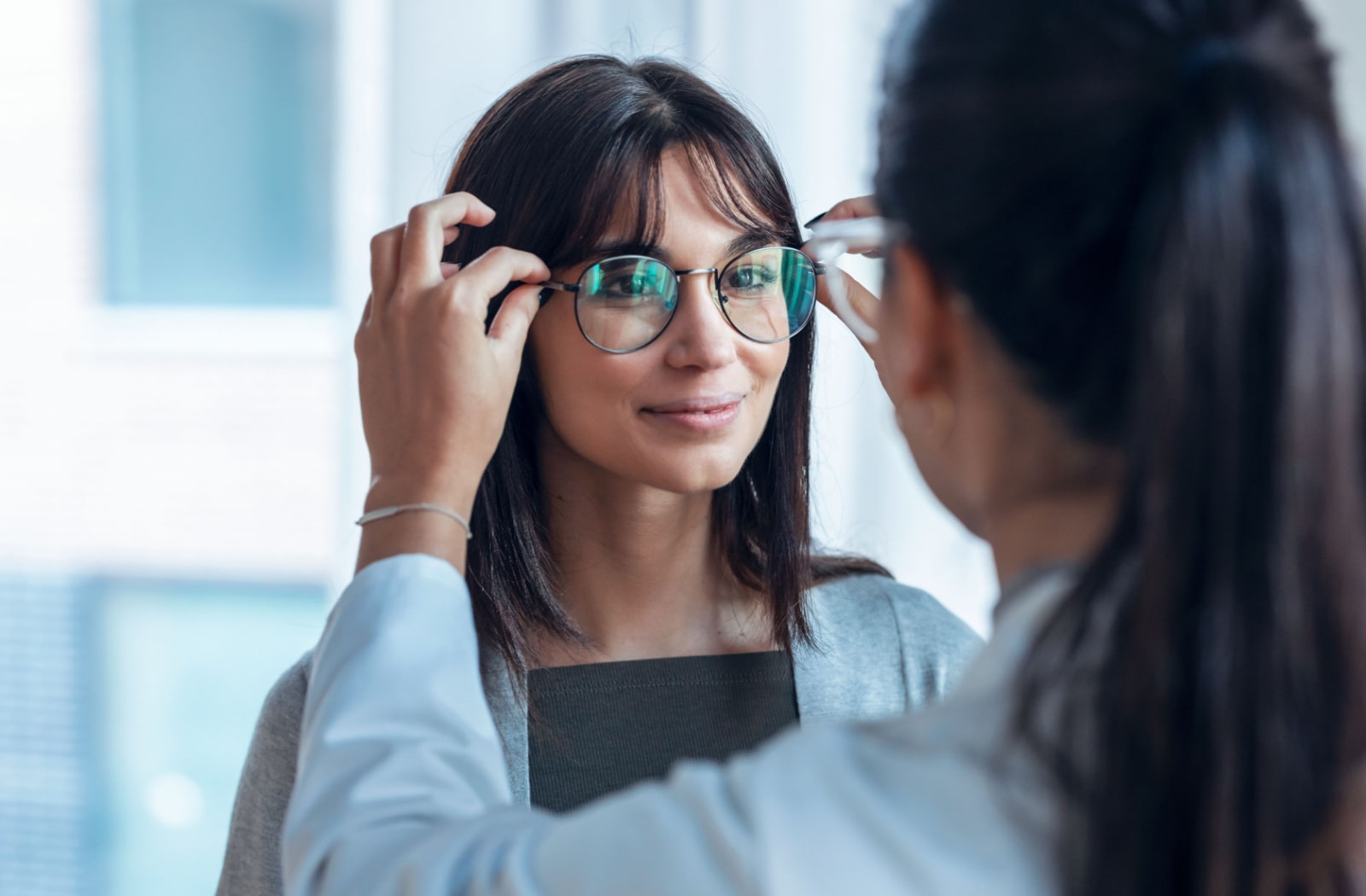Leading Factors to See an Optometrist Chino for Your Eye Health
Wiki Article
Checking Out the most recent Technical Advancements in Optometry and What They Mean for Optometrists
In the ever-evolving area of optometry, recent technical improvements are improving exactly how professionals approach eye treatment. From the precision of Optical Coherence Tomography to the nuanced insights provided by AI-driven analysis tools, these innovations are establishing brand-new criteria in client assessment and treatment. Teleoptometry is positioned to redefine availability, ensuring that know-how goes beyond geographical restrictions. As these developments penetrate the practice, eye doctors are faced with the obstacle of embracing these devices to improve individual results. Yet, the inquiry continues to be: just how will these technological changes redefine the roles and responsibilities within the career?Advancements in Diagnostic Devices
Advancing the area of optometry, innovations in diagnostic tools have actually reinvented the means eye treatment professionals examine and diagnose aesthetic impairments and ocular problems. The previous years has seen considerable technological developments, enabling more precise and comprehensive evaluations. Optical Coherence Tomography (OCT), as an example, supplies high-resolution cross-sectional pictures of the retina, enabling the early detection of illness such as glaucoma and age-related macular degeneration. This non-invasive imaging technique has ended up being indispensable in modern optometric technique.An additional key advancement is the intro of advanced corneal topography systems, which map the surface area curvature of the cornea with precision. These devices are especially helpful for fitting call lenses and identifying corneal disorders. Electronic retinal imaging has transformed typical ophthalmoscopy, using thorough, panoramic views of the retina that promote extensive aesthetic evaluations.
The growth of wavefront aberrometry has also been important, enabling the evaluation of refractive mistakes with unmatched accuracy (Optometrist Chino). This innovation helps in tailoring rehabilitative lenses and enhancing surgical results for refractive surgical procedures. Jointly, these analysis improvements encourage optometrists to deliver premium client care, guaranteeing very early treatment and customized therapy methods, inevitably boosting aesthetic wellness results
AI in Person Monitoring
Structure on the structure of innovative analysis devices, the unification of fabricated knowledge (AI) in individual monitoring stands for a transformative leap for optometry. AI systems are increasingly employed to boost efficiency, precision, and personalization in client treatment. By evaluating substantial quantities of data, AI can identify patterns and predict potential eye problems, enabling optometrists to customize treatments a lot more efficiently. This capability is essential in managing persistent eye diseases such as glaucoma and diabetic person retinopathy, where very early detection and continual monitoring are key.In addition, AI-driven platforms promote structured client communications and administrative procedures. Automated scheduling, online assessments, and customized follow-up strategies not only enhance individual satisfaction however additionally optimize time management for experts. These systems can triage individuals based upon the urgency of their problems, ensuring that those in essential requirement receive punctual focus.
Moreover, AI boosts decision-making by offering eye doctors with evidence-based recommendations and treatment pathways. By incorporating data from electronic wellness records, AI tools provide insights that educate medical decisions, decreasing the threat of mistakes and boosting patient outcomes. As AI remains to progress, its role in client monitoring will likely increase, improving the landscape of optometric treatment.
Developments in Retinal Imaging
In the realm of optometry, retinal imaging has seen exceptional technical developments that are enhancing diagnostic abilities and individual treatment. Developments such as Optical Comprehensibility Tomography (OCT) and fundus digital photography have revolutionized exactly how optometrists assess the retina and envision. OCT, particularly, provides high-resolution, cross-sectional pictures of the retina, permitting for the detailed evaluation of its layers. This capability is indispensable for very early detection and monitoring of problems like glaucoma, diabetic retinopathy, and age-related macular degeneration.Boosted imaging techniques like OCT angiography are further refining analysis precision. This non-invasive technique maps blood circulation in the retina, using essential insights right into vascular health and wellness without the need for color injections. In addition, adaptive optics modern technology is being incorporated right into retinal imaging systems to fix eye aberrations, delivering unmatched photo quality. Such developments promote the recognition of minute retinal adjustments that could represent disease progression.
Additionally, improvements in man-made intelligence are increasing retinal imaging by enabling computerized analysis of huge datasets. These systems aid optometrists in determining patterns indicative of pathology, thus improving analysis accuracy and effectiveness. Jointly, these developments are changing retinal imaging right into a cornerstone of modern eye care, enhancing results and broadening restorative possibilities.
Teleoptometry's Growing Function
Teleoptometry is progressively becoming a vital element of eye care, driven by advancements in electronic interaction and analysis tools. This is particularly advantageous in rural and underserved locations where access to specialized eye care is frequently limited.The assimilation of expert system (AI) additional boosts teleoptometry, making it possible for the analysis of visual information and assisting in the discovery of ocular conditions such as glaucoma and diabetic person retinopathy. AI-powered formulas can rapidly analyze intricate imaging information, providing eye doctors with important insights that strengthen scientific decision-making.
Additionally, teleoptometry sustains continuity of treatment through smooth integration with electronic health and wellness records (EHRs), enabling eye doctors to preserve extensive patient histories. This makes certain that people get individualized and constant his comment is here treatment even when consulting with various professionals.
Regardless of these benefits, obstacles continue to be, including making certain data security and taking care of client assumptions. Nevertheless, teleoptometry represents a significant stride towards more easily accessible, reliable, and patient-centered eye treatment. As innovation progresses, its function is poised to increase better.

Future Fads in Eye Treatment
A myriad why not try these out of ingenious patterns is readied to improve the future of eye care, driven by technical innovations and the progressing requirements of people. One significant pattern is the integration of synthetic intelligence (AI) in diagnostics, which assures to enhance the precision and performance of eye assessments. AI formulas can evaluate substantial amounts of data from retinal images, potentially identifying conditions like diabetic retinopathy and glaucoma earlier than traditional methods.Additionally, customized medication is getting grip in optometry, with genetic testing educating customized treatment strategies. This strategy intends to enhance individual results by tailoring treatments to private hereditary profiles. Wearable modern technology, such as wise contact lenses, is likewise imminent, offering real-time surveillance of intraocular pressure or glucose levels, thus giving constant understandings right into ocular and systemic health.
The fostering of increased reality (AR) and digital reality (VR) in training and client education More hints is one more arising fad. These modern technologies use immersive experiences that can enhance understanding and skills both for eye doctors and individuals. As these trends develop, optometrists have to stay abreast of technological innovations to supply advanced treatment, making certain enhanced person end results and satisfaction in the vibrant landscape of eye treatment.
Conclusion

Collectively, these diagnostic innovations equip eye doctors to supply remarkable patient care, making certain very early intervention and customized therapy approaches, eventually enhancing visual wellness end results.

As these technologies proceed to evolve, optometrists need to adjust and include them right into method, eventually optimizing operations efficiency and raising the criterion of eye care supplied to clients.
Report this wiki page